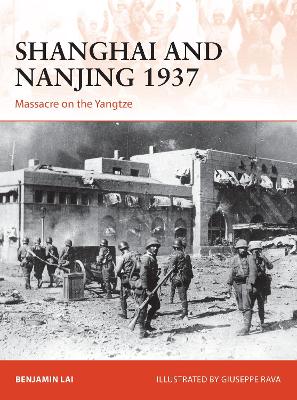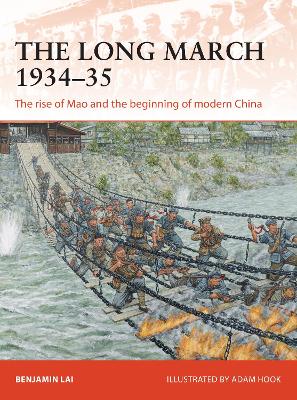Campaign
2 primary works • 3 total works
Book 263
On 8th December 1941, as part of the simultaneous combined attack against Pearl Harbor, the Imperial Japanese Army (IJA) invaded the Philippines, Thailand and Malaysia and the British colony of Hong Kong. After only 18 days of battle the defenders, a weak, undermanned brigade, were overwhelmed by a superior force of two battle-hardened IJA divisions. What defines the battle of Hong Kong was not the scale - just 14,000 defended the colony - but the intensity of this battle, fought not only by the British Army, Navy and Air Force but also Canadians, Hong Kong's own defence force, the Indian Army and many civilians. The campaign itself is characterized by a fierce land battle, with long artillery duals and as well as fast naval actions with intense actions at the Gin Drinkers Line as well as the battle of Wong Nai Chung Gap where a handful of defenders took on an entire Japanese regiment. Less known but equally important are individual acts valour such as CSM John Robert Osborne winning a posthumous VC, throwing himself over a Japanese grenade to save fellow combatants.
Book 309
From 1931, China and Japan had been embroiled in a number of small-scale conflicts that had seen vast swathes of territory being occupied by the Japanese. On 7 July 1937, the Japanese engineered the Marco Polo Bridge Incident, which led to the fall of Beijing and Tianjin and the start of a de facto state of war between the two countries. This force then moved south, landing an expeditionary force to take Shanghai and from there drive west to capture Nanjing.
This fully illustrated book tells the story of the Japanese assault on these two great Chinese cities. The battle of Shanghai was the first large-scale urban warfare of World War II and one of the bloodiest battles of the entire Sino-Japanese War. The determined resistance by Chinese inflicted sizable Japanese casualties, and may well have contributed to the subsequent massacre of prisoners and civilians in the battle of Nanjing, tarnishing Japan's reputation in the eyes of the world.
This fully illustrated book tells the story of the Japanese assault on these two great Chinese cities. The battle of Shanghai was the first large-scale urban warfare of World War II and one of the bloodiest battles of the entire Sino-Japanese War. The determined resistance by Chinese inflicted sizable Japanese casualties, and may well have contributed to the subsequent massacre of prisoners and civilians in the battle of Nanjing, tarnishing Japan's reputation in the eyes of the world.
Every nation has its founding myth, and for modern China it is the Long March. In the autumn of 1934, the Chinese Nationalists under Chiang Kai-shek routed the Chinese Communists and some 80,000 men, women and children left their homes to walk with Mao Zedong into the unknown. Mao's force had to endure starvation, harsh climates, and challenging terrain whilst under constant aerial bombardment and threatened by daily skirmishes. The Long March survivors had to cross 24 rivers and 18 mountain ranges, through freezing snow and disease-ridden wilderness to reach their safe-haven of Yan'an. In military terms, the Long March was the longest continuous march in the history of warfare and it came as a terrible cost - after one year, 6,000 miles and countless battles, fewer than 4,000 of the original marchers were left.
Illustrated with stunning full-colour artwork, this enthralling book tells the full story this epic display of resilience, and shows how, from the desert plateau of Yan'an, these survivors would grow the army that conquered China 14 years on, changing history forever.
Illustrated with stunning full-colour artwork, this enthralling book tells the full story this epic display of resilience, and shows how, from the desert plateau of Yan'an, these survivors would grow the army that conquered China 14 years on, changing history forever.


